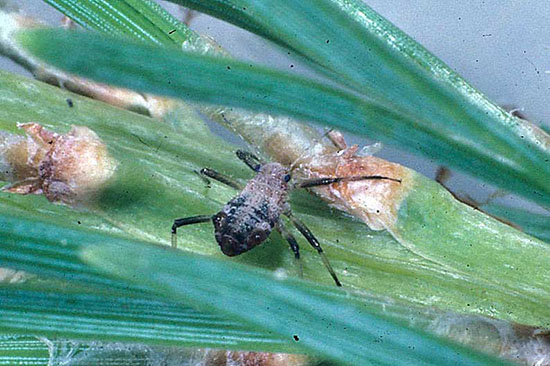Issue 5, May 30, 2017
Cinara Conifer Aphids
Conifers get aphids like other plants, but those aphids in the genus Cinara are capable of killing branches and even small trees when numerous. We have received some recent damage reports.
Aphids in the genus Cinara are typically orange, tan, brown or black. The green spruce aphid is actually orange. Some have white markings. They tend to be long-legged and more active than other aphids causing some people to casually identify them as spiders. Others flatten against the stem, allowing them to overlooked as fascicle scales. Some species are one-sixth inch long, making them larger than most aphids.
Most feed on stems and branches, producing large amounts of honeydew. The honeydew causes branches, needles, and areas below trees to be sticky. Black sooty mold grows on the honeydew to the point that blackish needles or branches are useful in scouting for aphids and other sap-sucking insects.
The white pine aphid, Cinara strobi, is familiar to many for the black eggs laid in the fall along the needles of white pine. The eggs are obvious on Christmas trees and will hatch if the tree is kept in warm, indoor conditions for several weeks. Homeowners who have this occur typically refer to them as spiders, although spider eggs on Christmas trees can also hatch. In both cases, hatch typically occurs on trees left indoors from Thanksgiving to well after New Year's Day. More importantly than the aphids and spiders, these dried out trees become fire hazards.

Cinera aphid eggs on white pine.

Cinera aphid on Scotch pine.
There are Cinara species that feed on spruces, Douglas-fir, true firs, arborvitae, Eastern red cedar, other junipers, true cedars, cypress, and other pines. They are easily controlled with many labeled insecticides. Unfortunately, even heavy infestations easily go unnoticed until severe damage has occurred. (Phil Nixon)
Author:
Phil Nixon